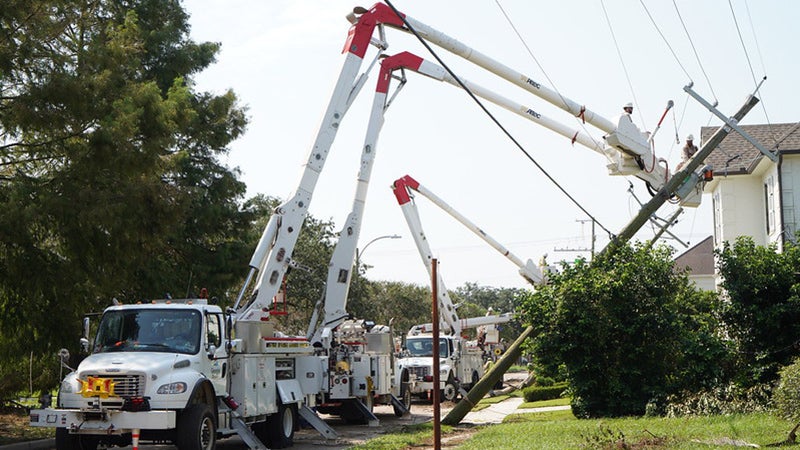$50M in safety plans tasked; Council suggests Denka production reduction
Published 12:13 am Saturday, December 17, 2016
LAPLACE — A chemical plant emitting a potential carcinogenic into the air is investing $50 million in safety measures that should ultimately reduce the emission rate by as much as 85 percent, St. John the Baptist Parish officials were told this week.
Dr. Chuck Brown, secretary for the Louisiana Department of Environmental Quality, also emphasized the current emissions do not pose an immediate health concern to parish residents. He acknowledged the six monitoring six monitoring sites scattered throughout the parish have shown various spikes in the levels of chloroprene released but was quick to add, “that is exactly what they are, spikes.”
“It is not like a smoking gun somewhere in St. John Parish,” Brown said. “It doesn’t mean we are not looking at and addressing the situation at hand.”
Brown said he wanted to address Council members Tuesday because of the heightened concern among residents since it was learned in late 2015 the Environmental Protection Agency had classified chloroprene as a potential carcinogenic to humans based on exposure for 24 hours a day, seven days a week for 70 years.
Denka Performance Elastomer, which in November 2015 announced its acquisition of DuPont Performance Polymers in LaPlace, produces synthetic rubber known by the trade name Neoprene. Brown said Denka, which houses its U.S. headquarters in the LaPlace plant, is the only company in the country producing Neoprene.
The product is produced by the polymerization of chloroprene.
Brown informed Council members that beginning in January Denka is launching the first of four interim safety measures. The company is planning to install condensers at various production points in January and March, rerouting during the production process is scheduled for the summer and by the end of 2017 a thermal oxidizer, which plants typically used to destroy hazardous air pollutants and volatile organic compounds, should be up and running.
Brown said Denka currently emits about 120,000 tons of chloroprene annually, but that number should be reduced by at least 85 percent once the four steps are completed. According to Brown, the levels should be reduced as early as January, when the first condensers are scheduled to be installed.
“(Denka officials) have not resisted anything we have asked them to do,” Brown said. “We can make them do what we ask them to do. They are investing a lot of money.”
He added once all of the measures are operational, including the oxidizer, the air will monitored and the data collected will be used by the EPA to establish a new emission standard that Denka will be required to adhere to.
On several occasions, under questioning by Council members, Brown reiterated there is no immediate danger to parish residents and noted the incidents of cancer in St. John Parish are no higher than anywhere else in the state. In fact, according to Brown, the cancer rate for females in the parish is slightly lower than the state average.
New Orleans pediatrician Dr. Jamie Guidry, who consults with the DEQ, said the current level of spikes of chloroprene would not cause any ill effects but that could change if the issue was not addressed.
“There is some comfort this is not an emergency,” he said.
“If it was an emergency we would have to shut it down.”
As was the case at last week’s School Board meeting, parish officials openly expressed their concern and were perhaps a bit skeptical of the company’s commitment. Some Council members said the pollution problems date to DuPont, which was a fixture in LaPlace for decades.
All expressed concern for the future and the health of the parish’s children.
Councilman Lennix Madere Jr. recently asked Denka officials to reduce production at the plant. He said he was told a 20 percent reduction would put the company out of business but a 10 percent decrease was possible.
“I agree they need to reduce production,” Councilwoman Jaclyn Hotard said. “It would be a good faith effort (to the parish). We have a valid concern for all of us.”
Councilman Larry Sorapuru inquired about the potential of medical monitoring but was told that would be impractical for a number of reasons. Dr. Lou Ann White a toxicologist for the Tulane School of Public Health in New Orleans, said one problem is the body breaks down chloroprene quickly after it enters the system.
White added there is no marker to determine the long-term risk but added the DEQ is being proactive.
“We don’t’ want to look at people when they get sick,” she said. “Let’s fix it before the people get sick.”
Because the chemical is already in the air, she said the focus should be on reducing the emissions and as a result reducing any health risks to residents.
“We know we have a problem,” Brown said “We are coming up with a solution.”
— By Richard Meek





